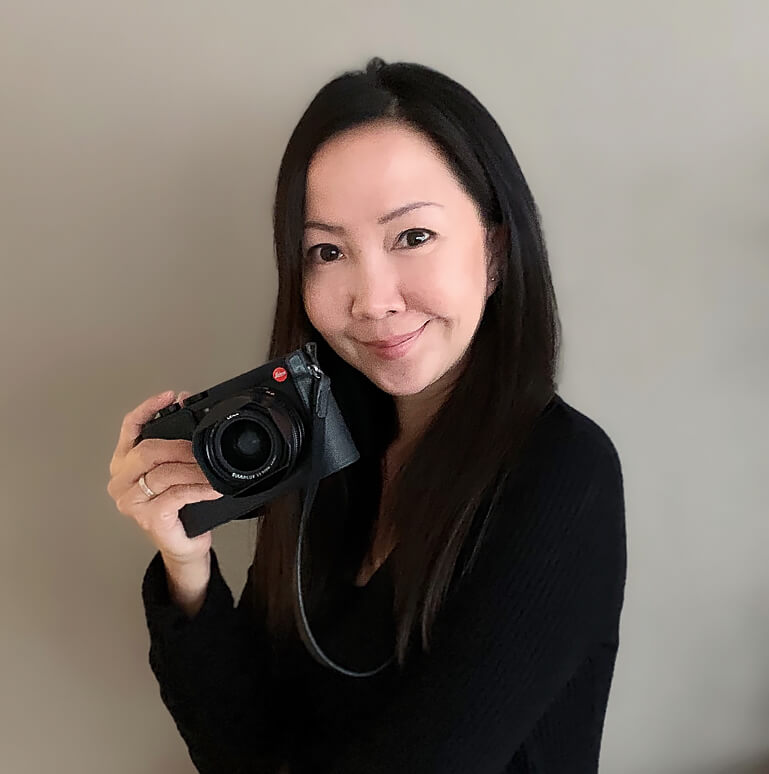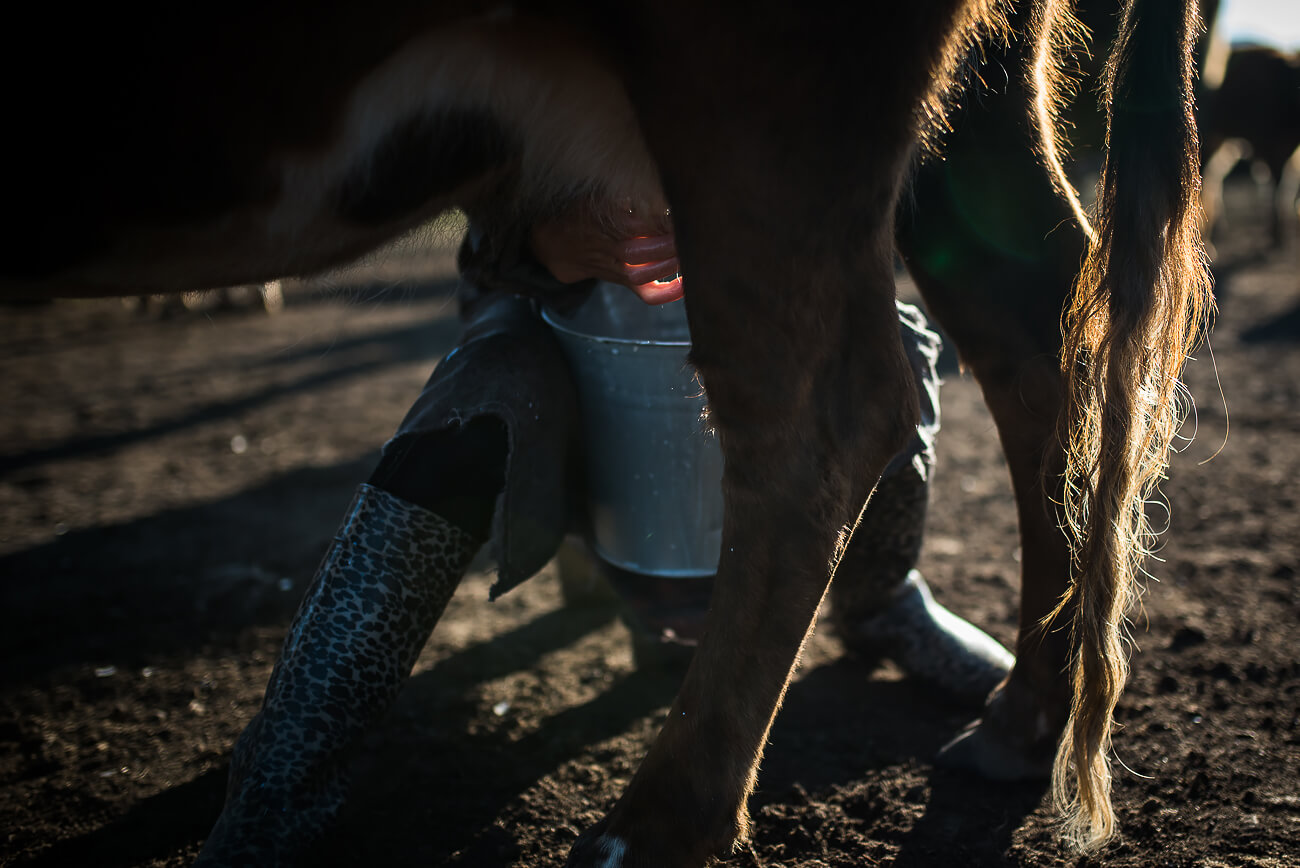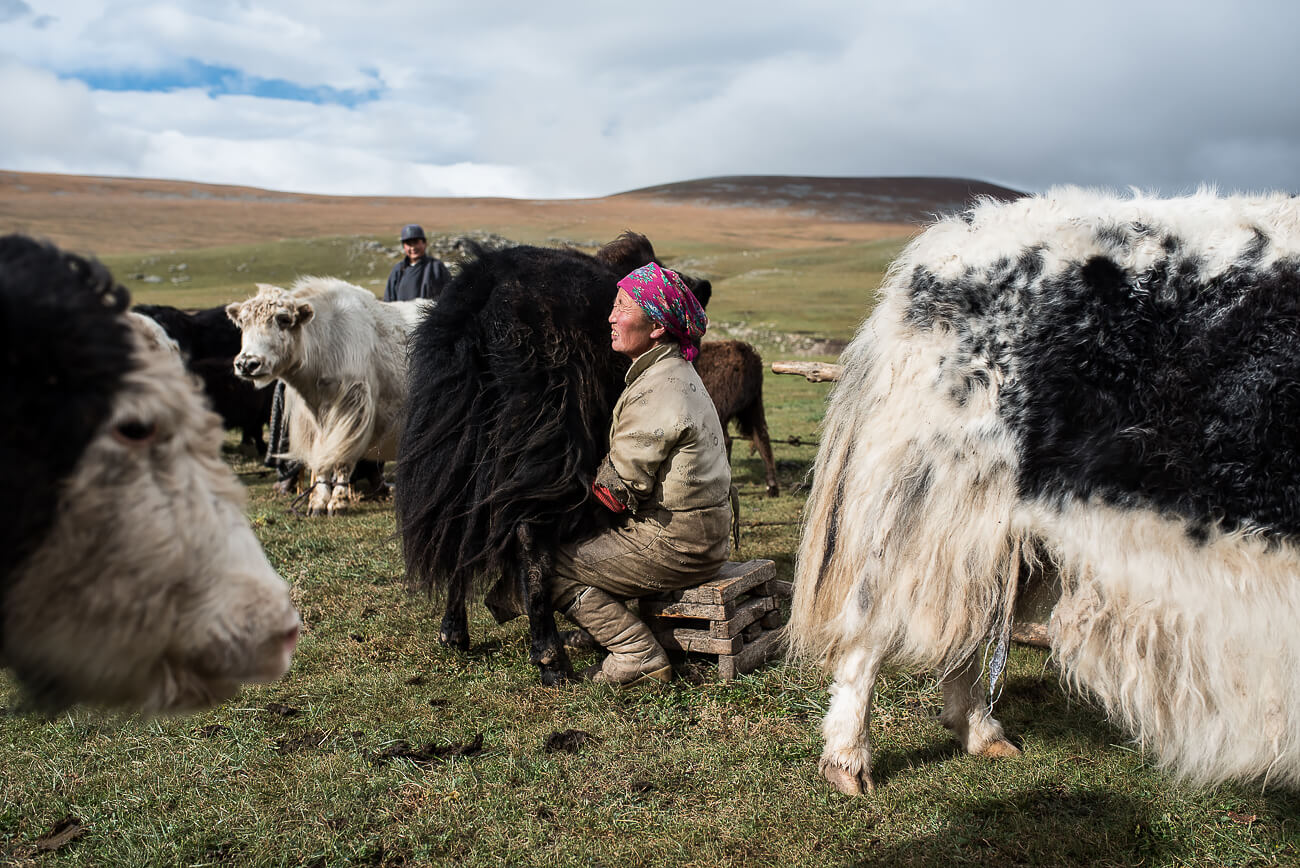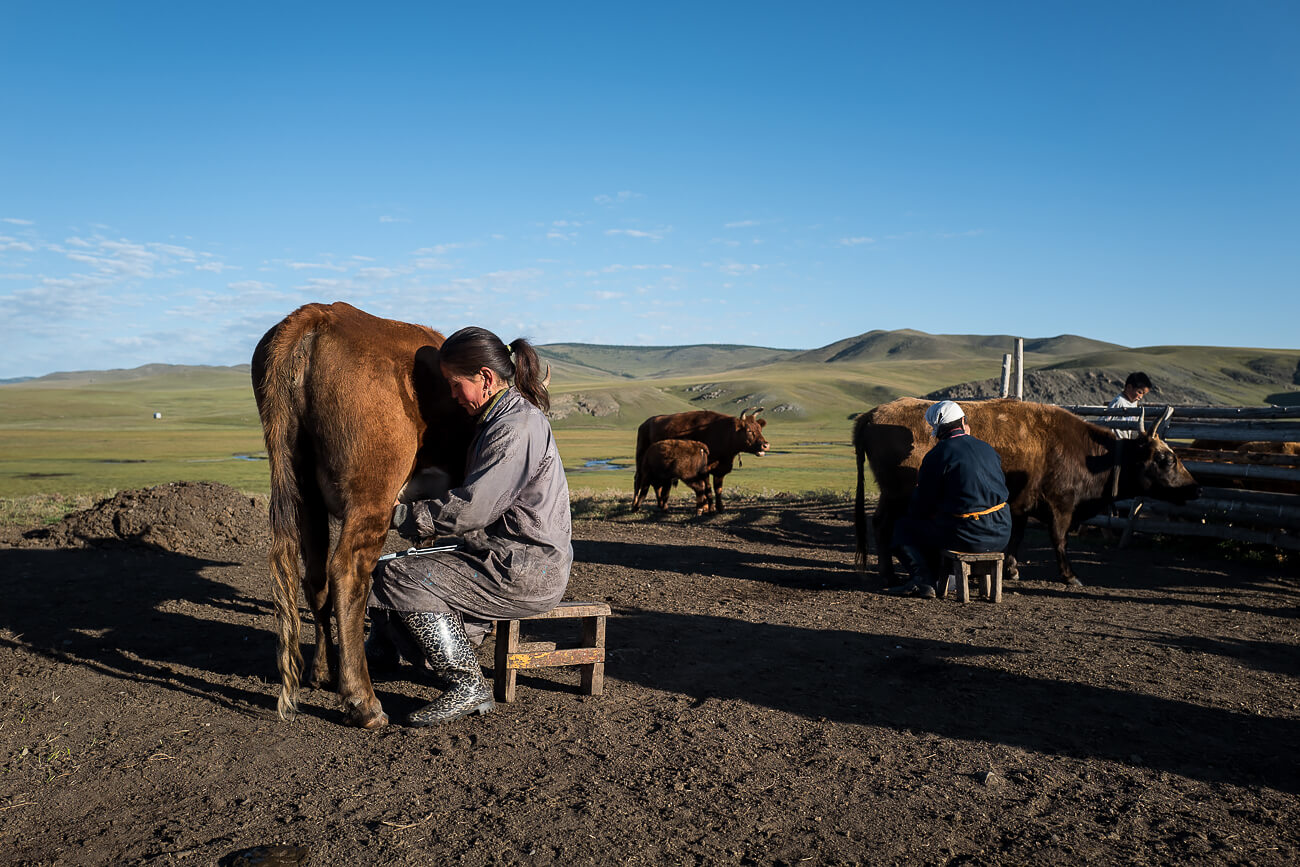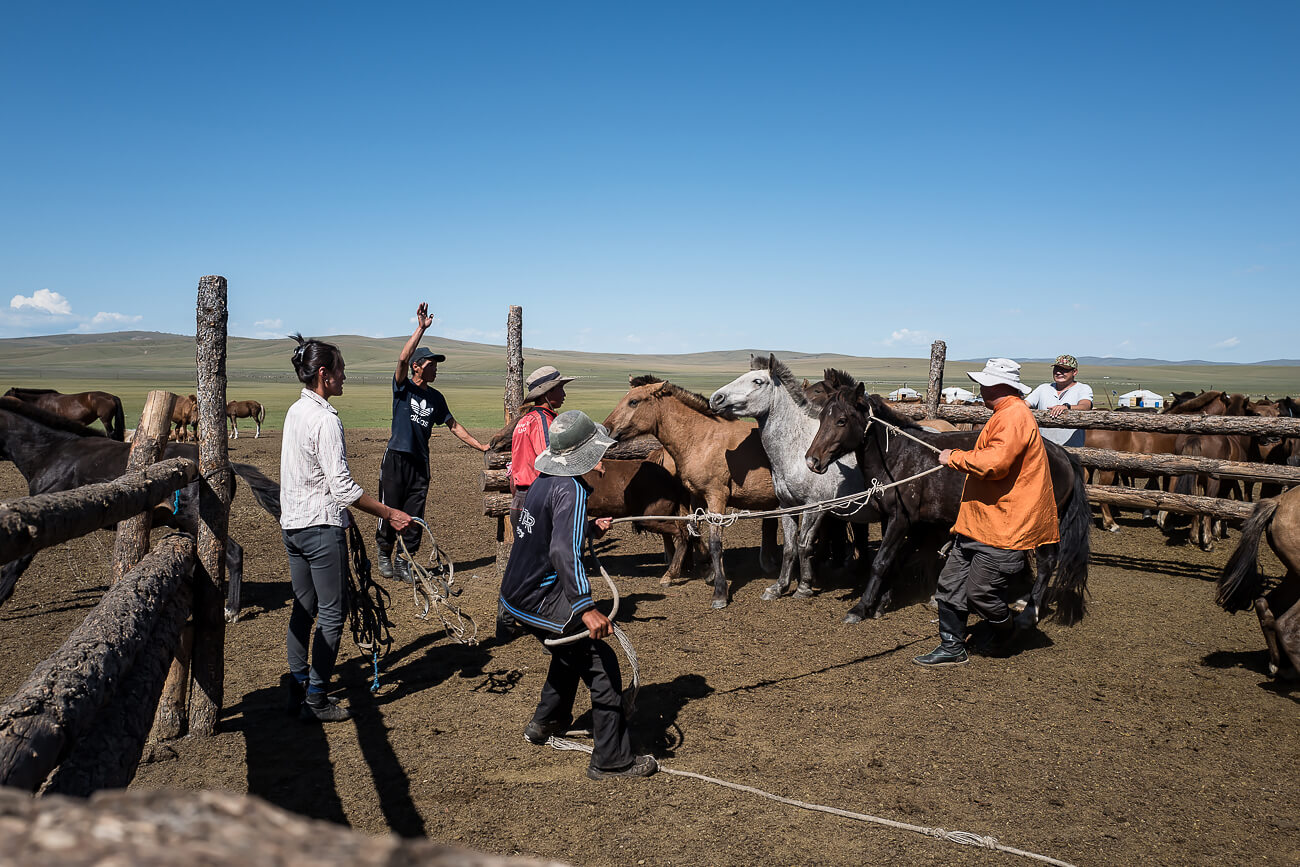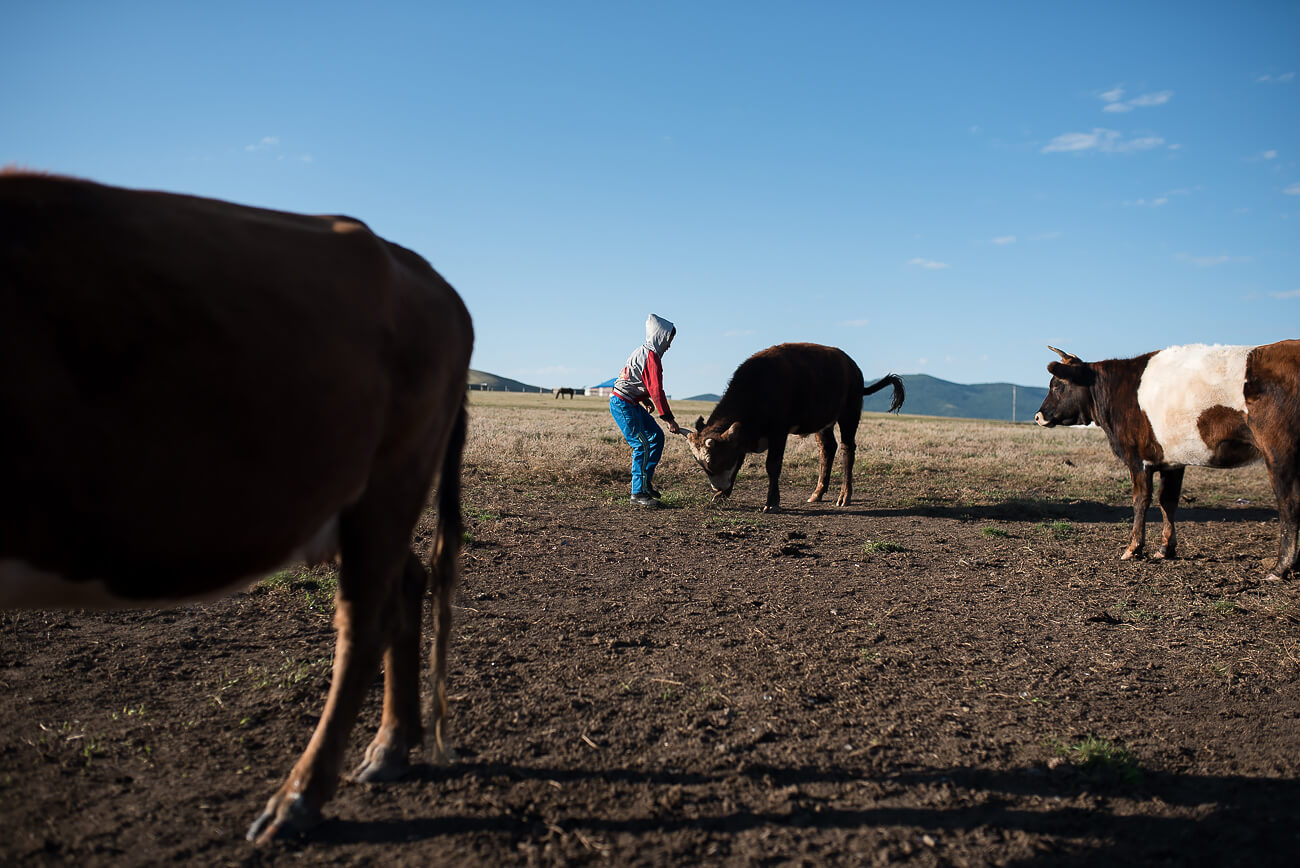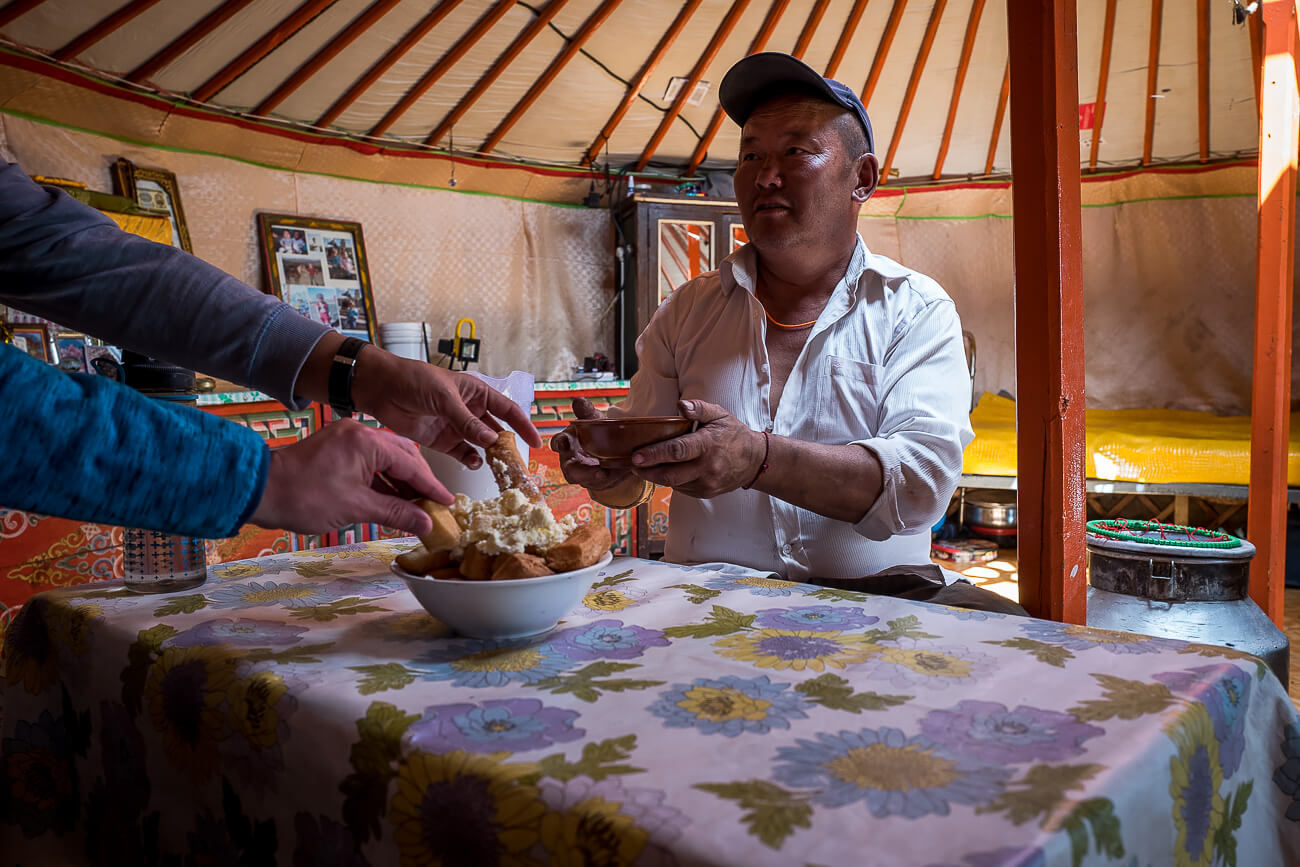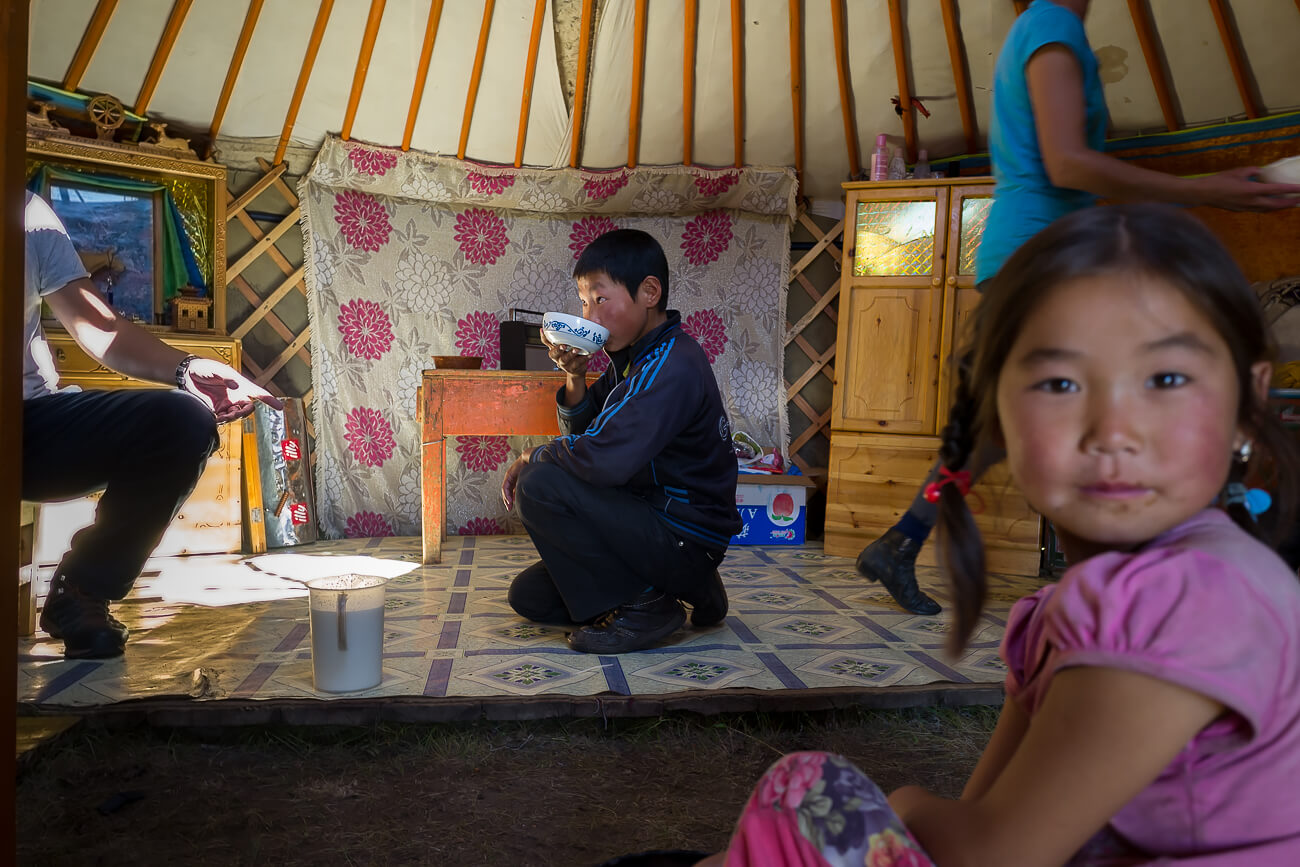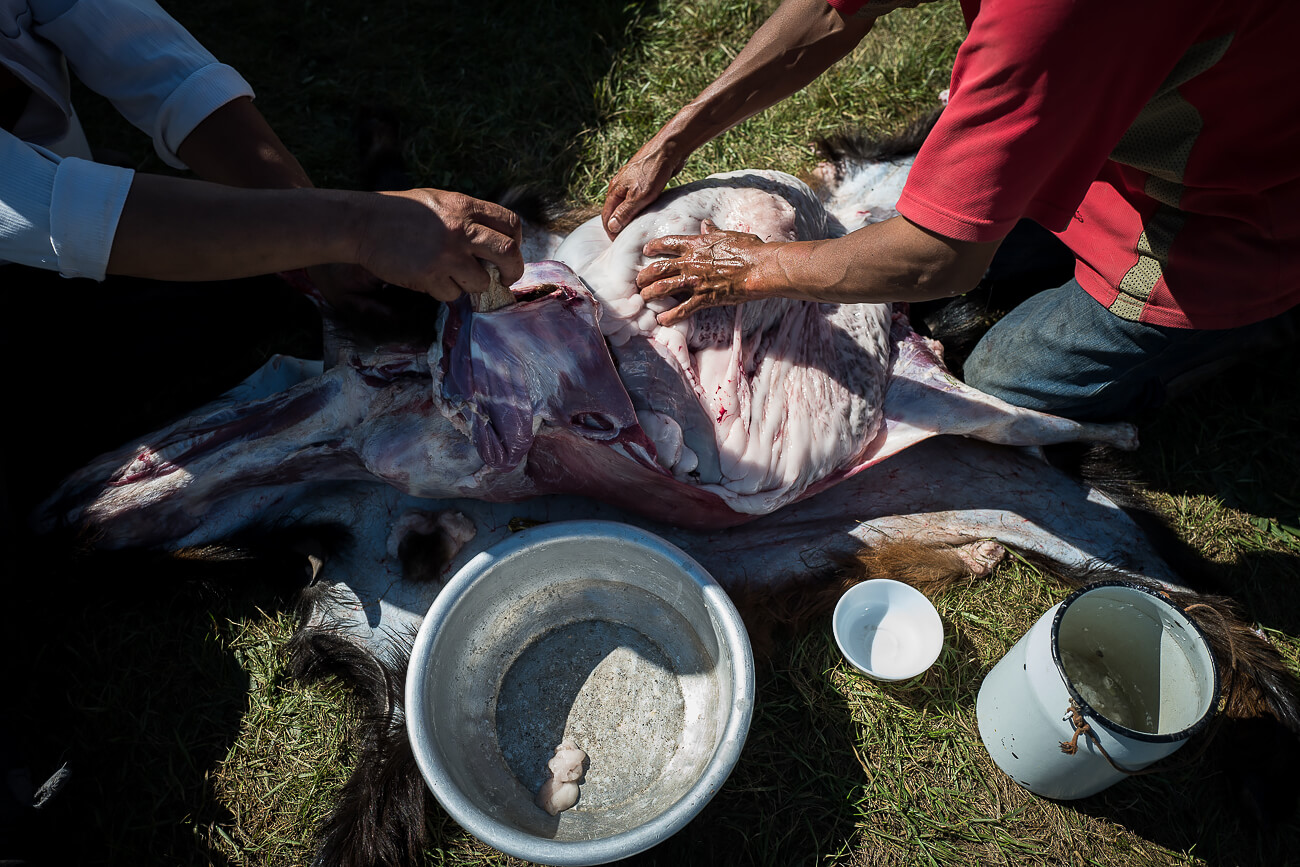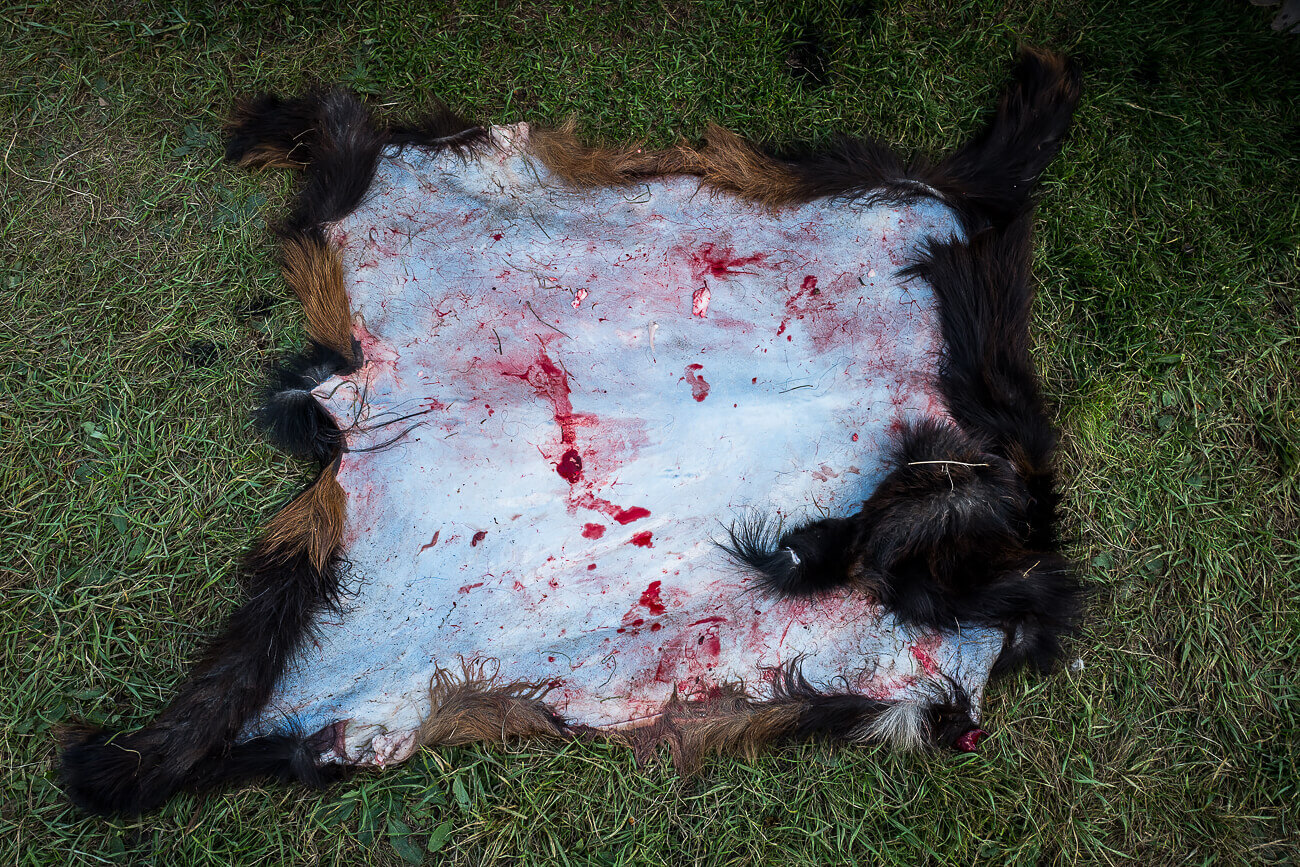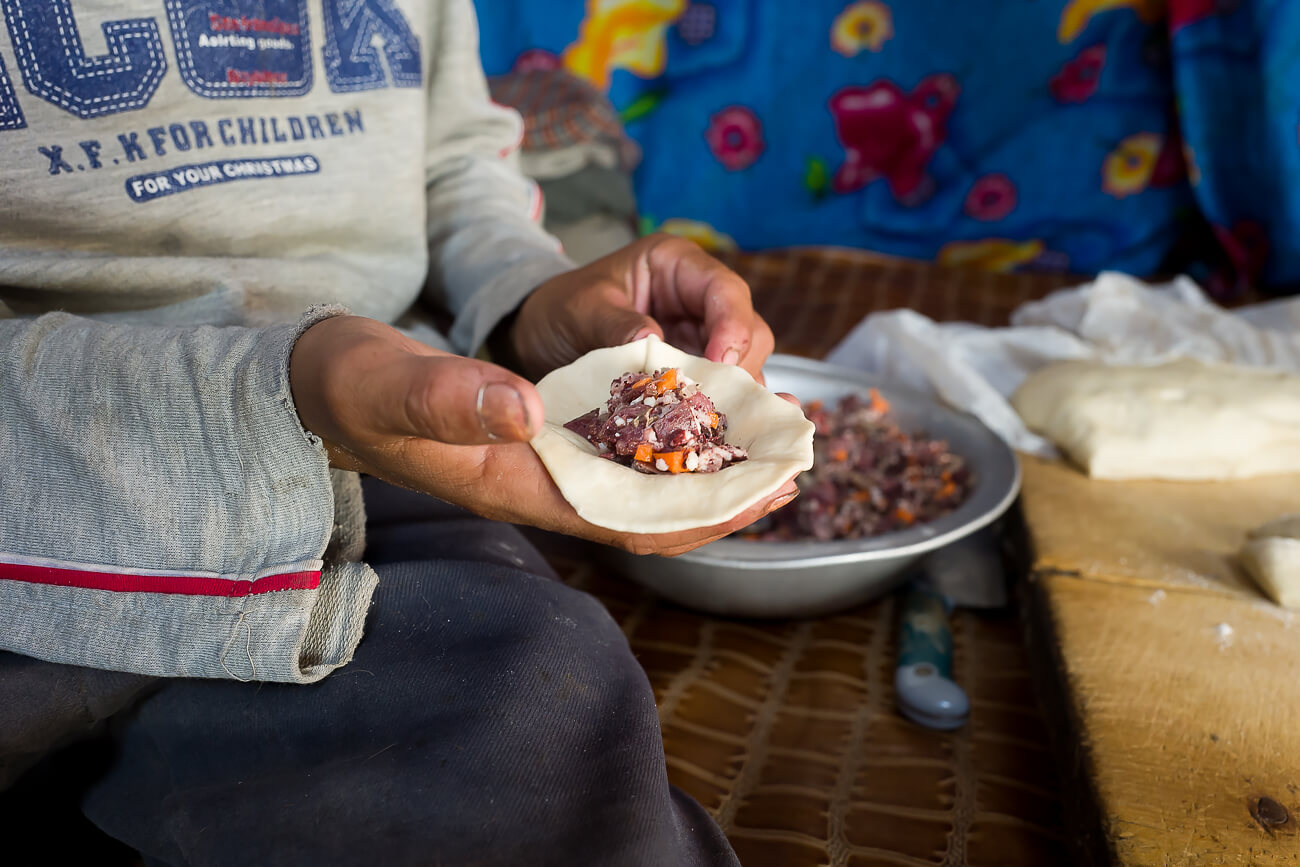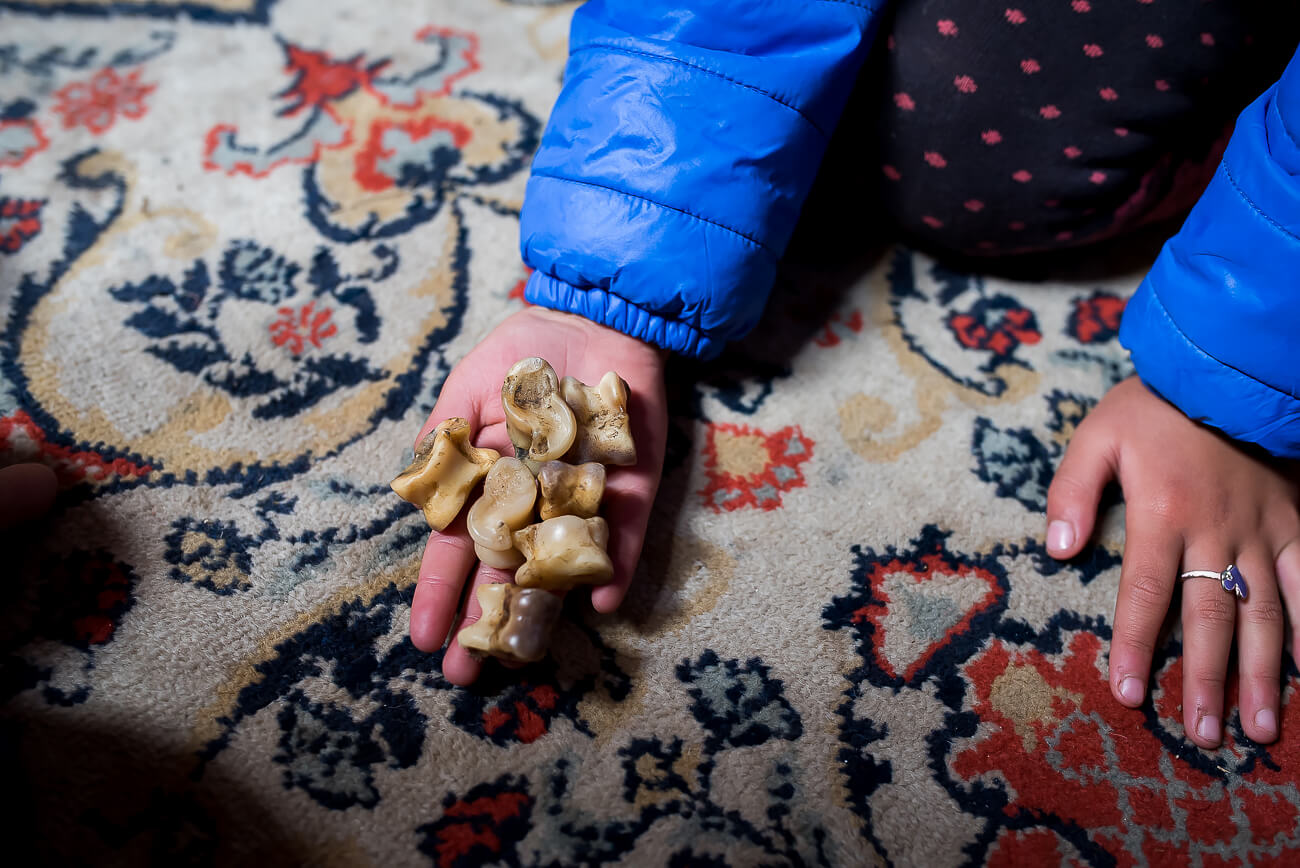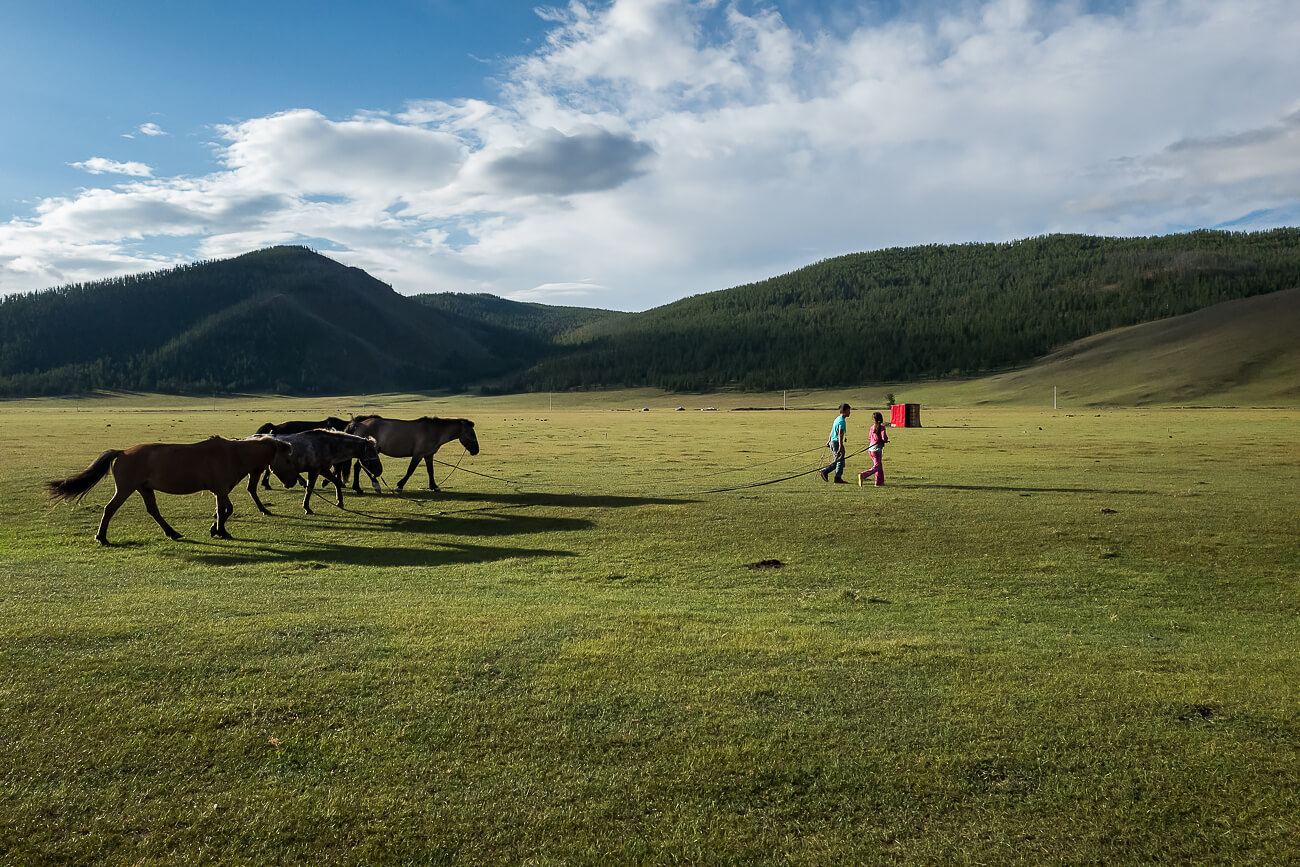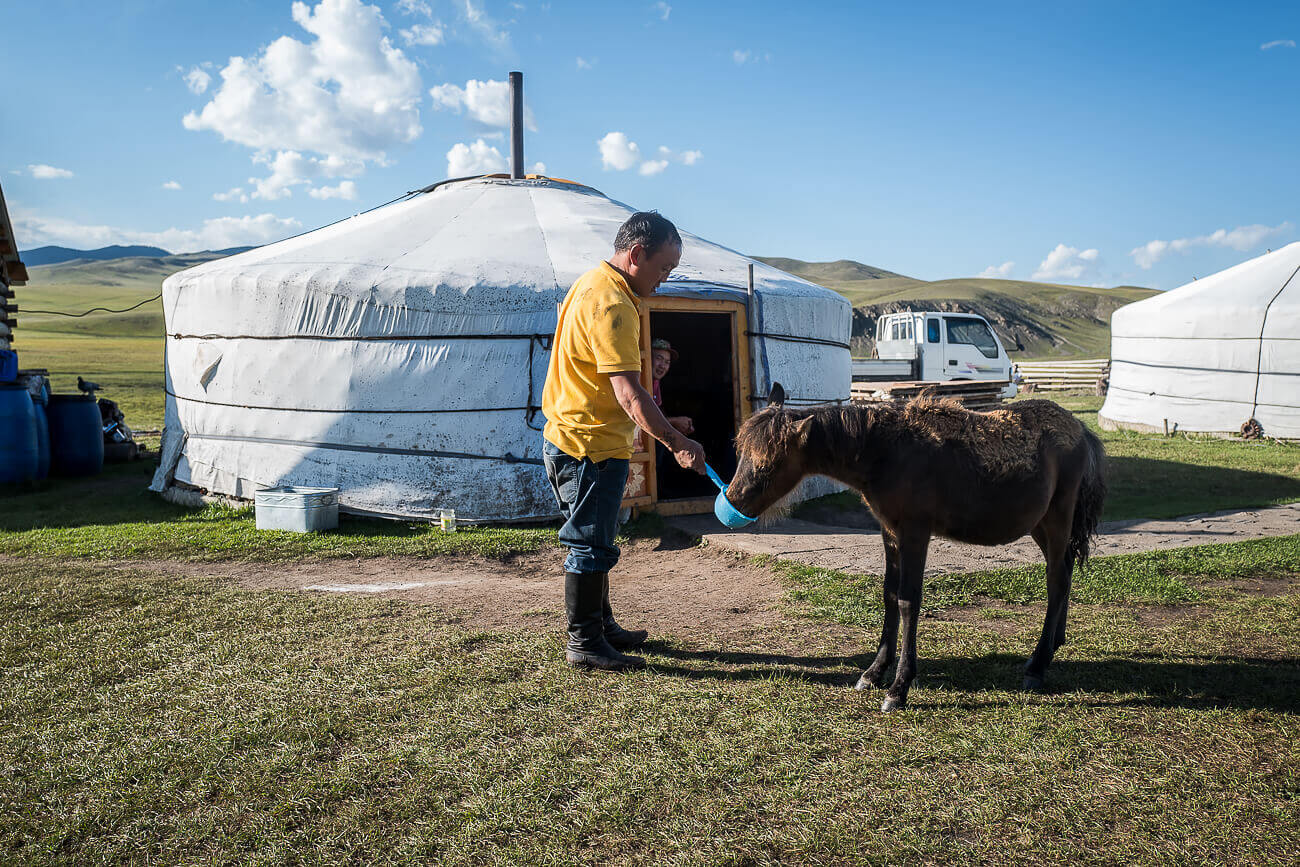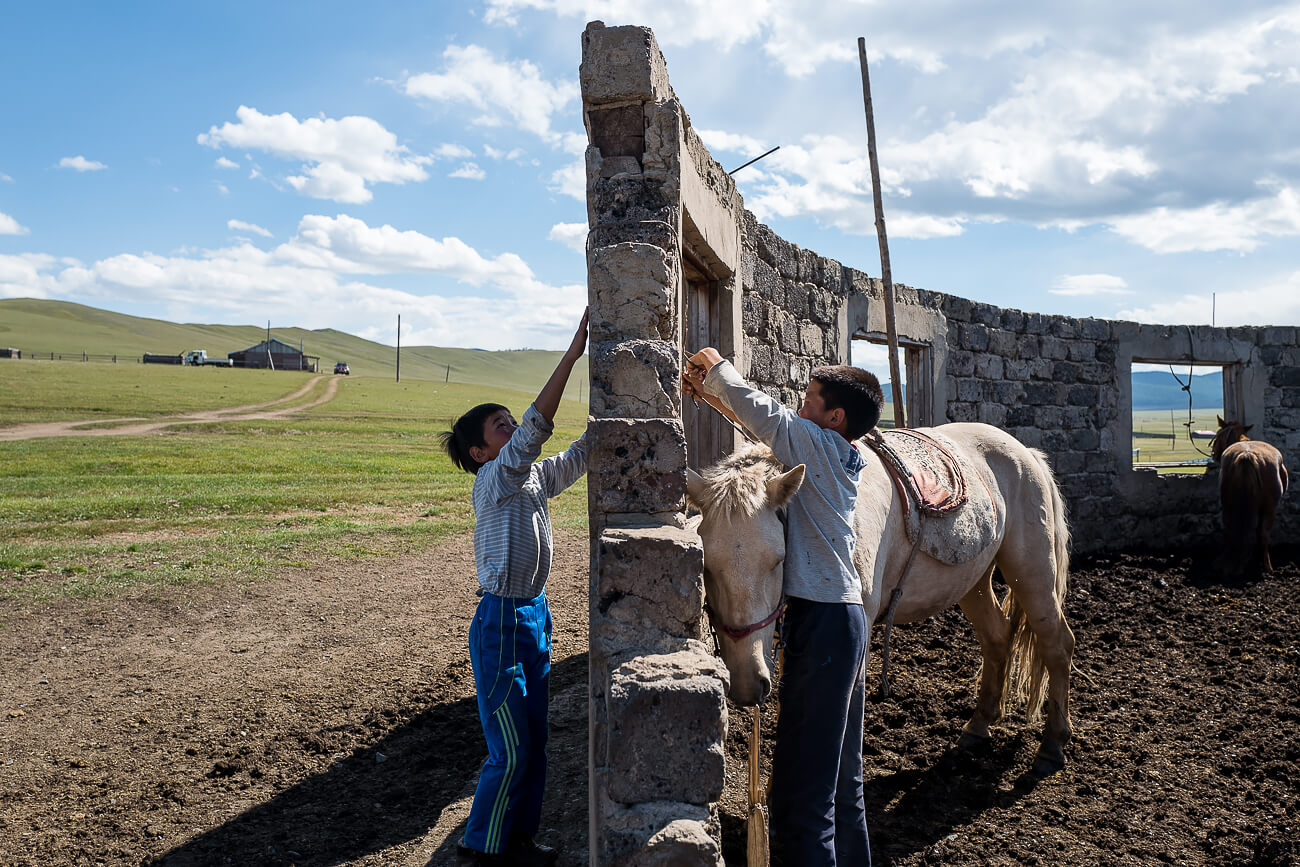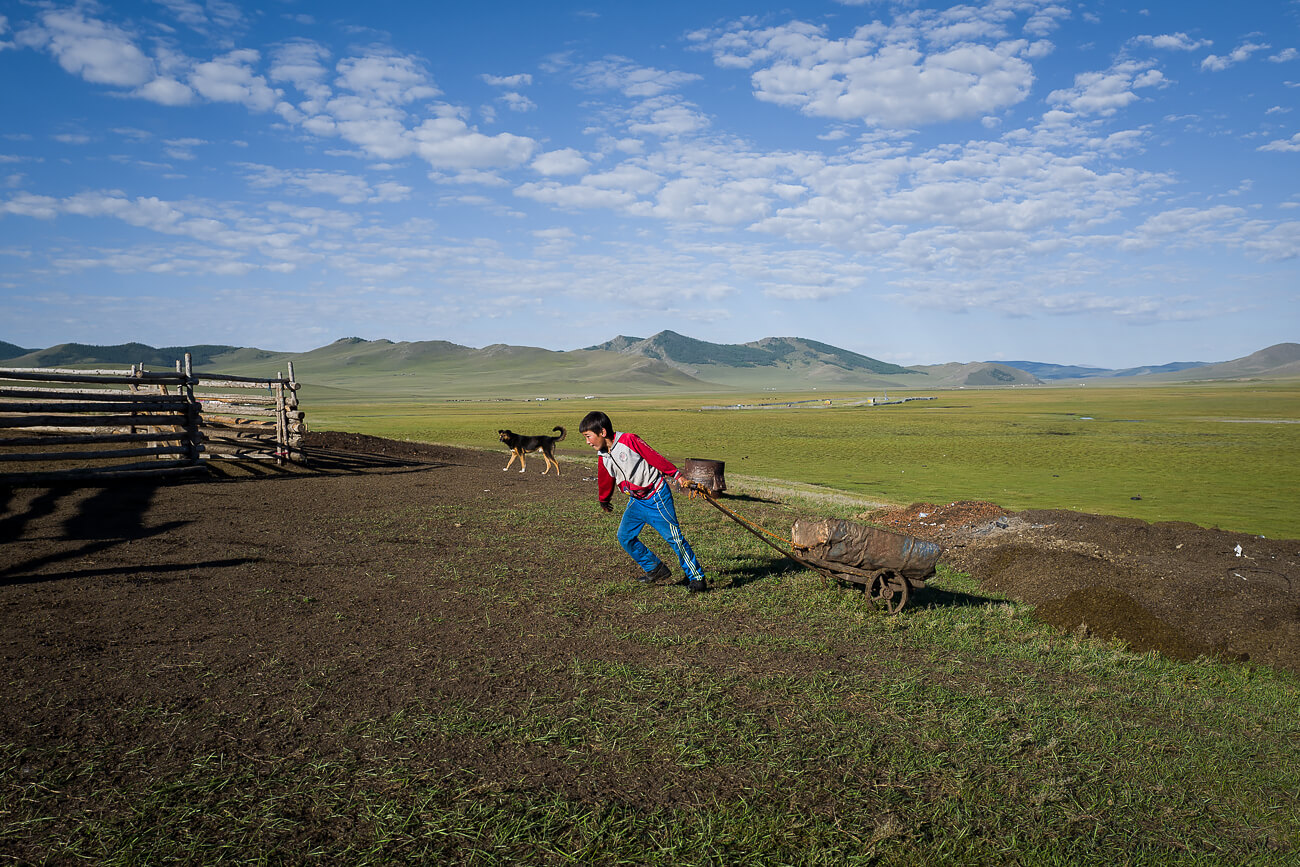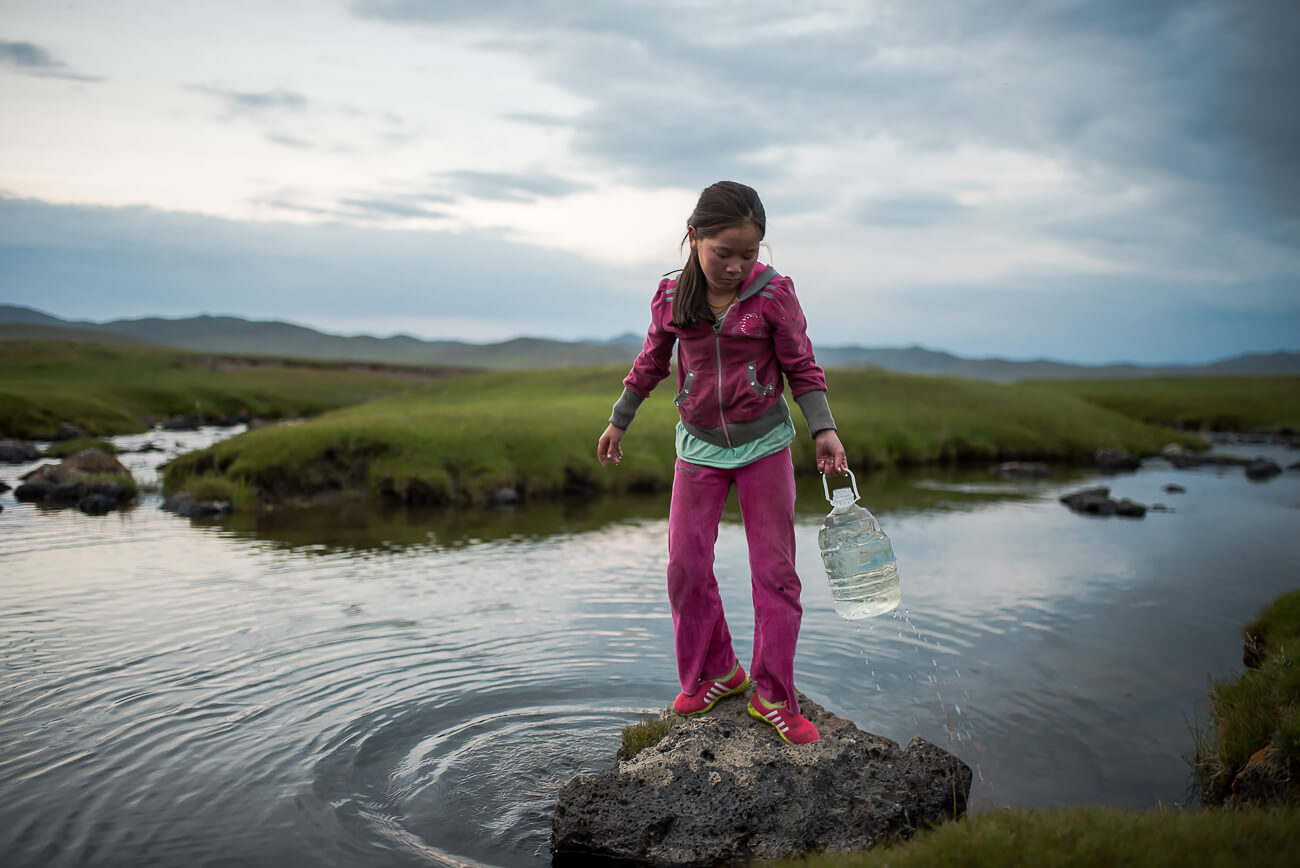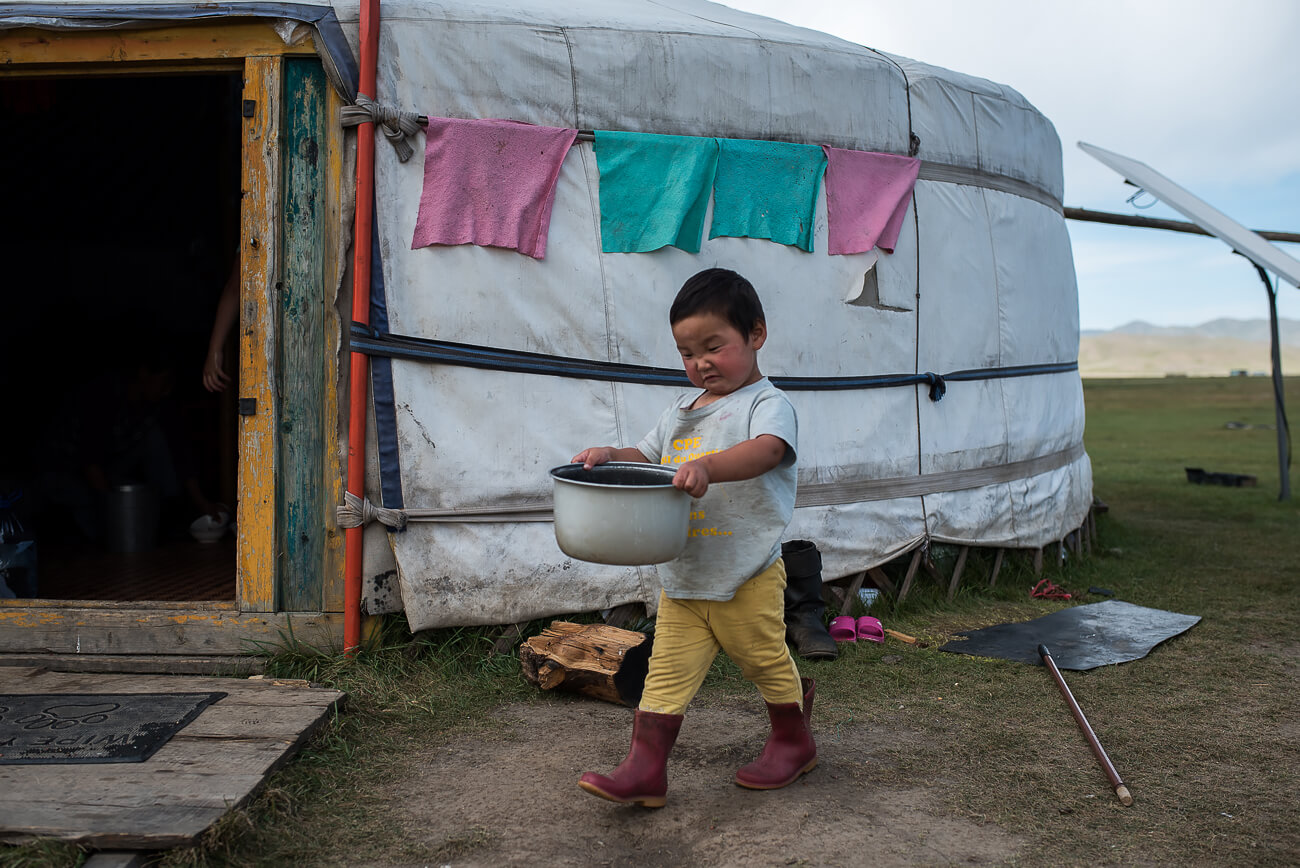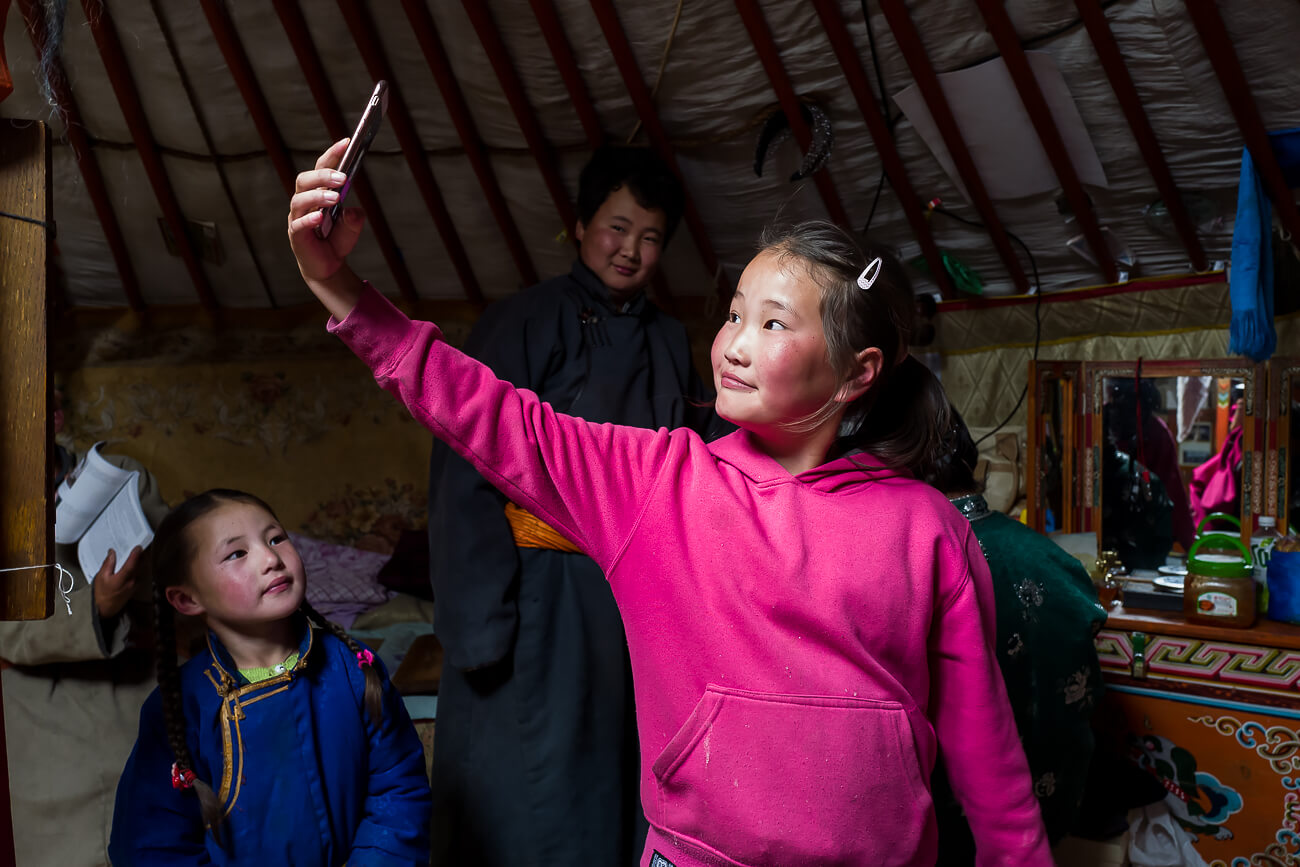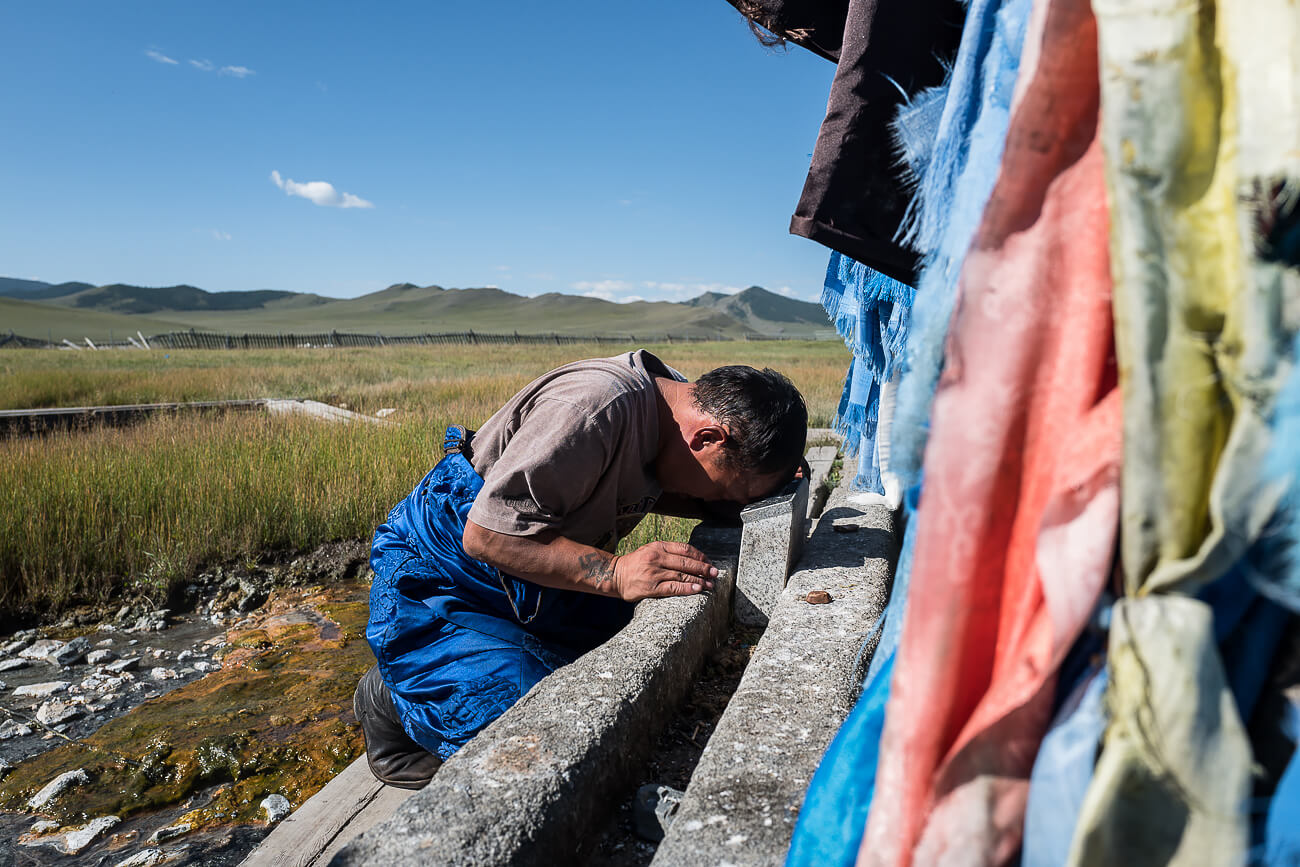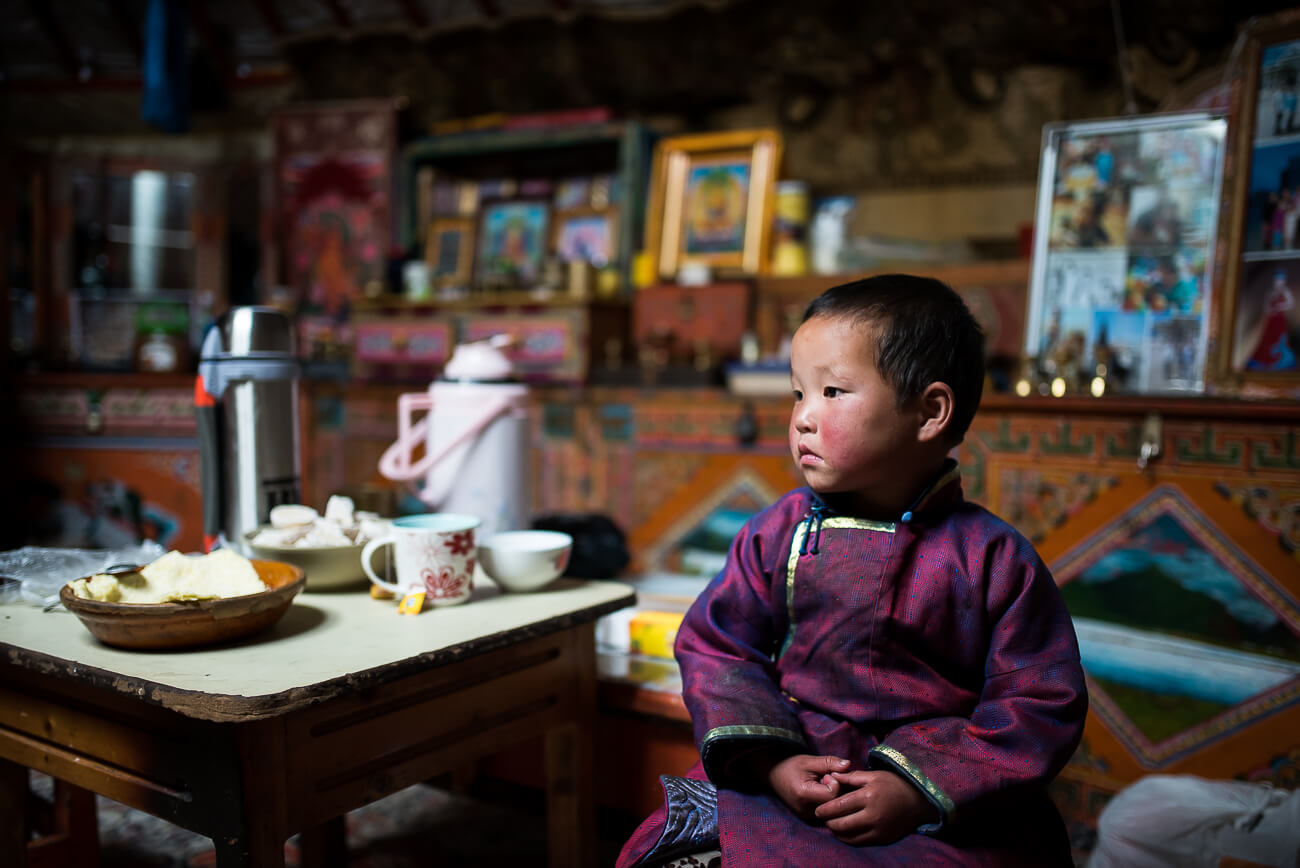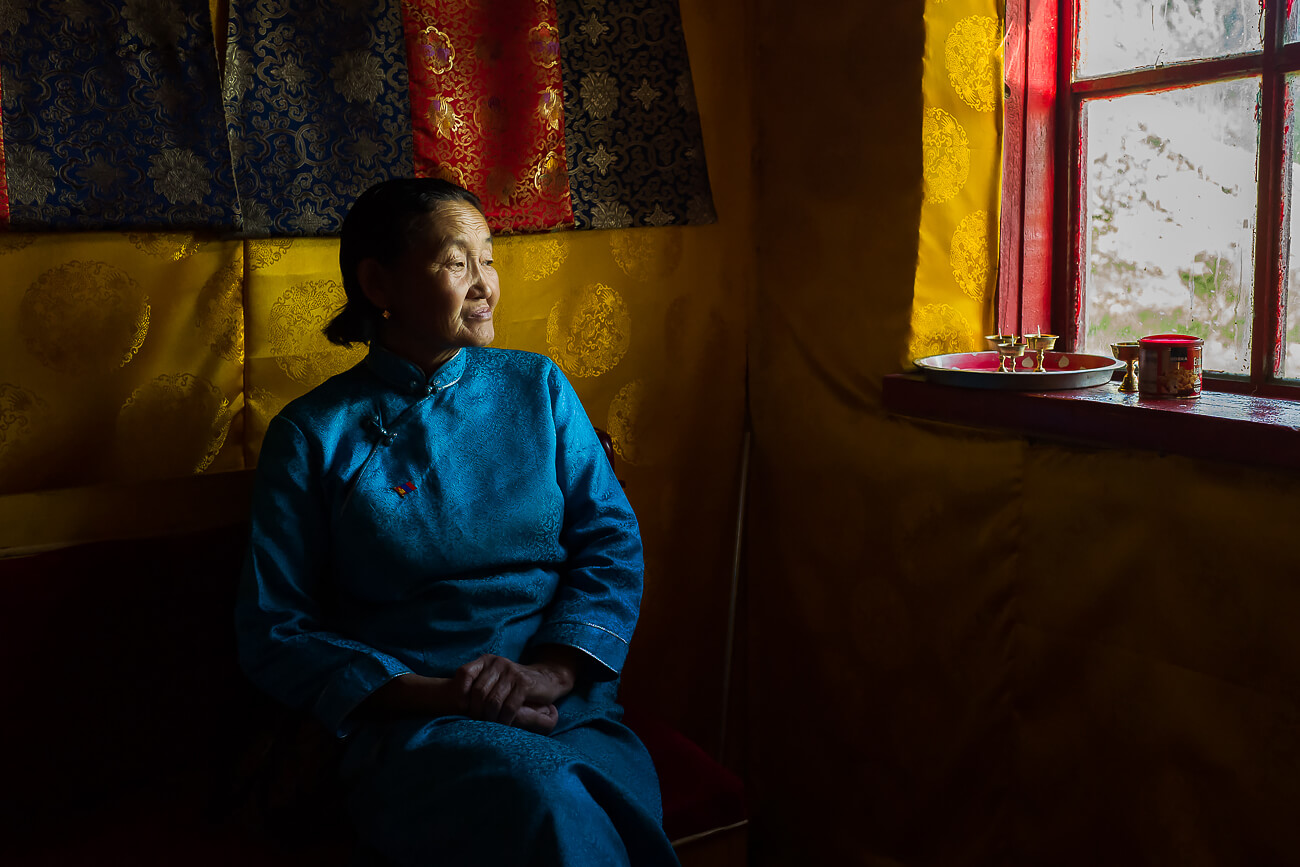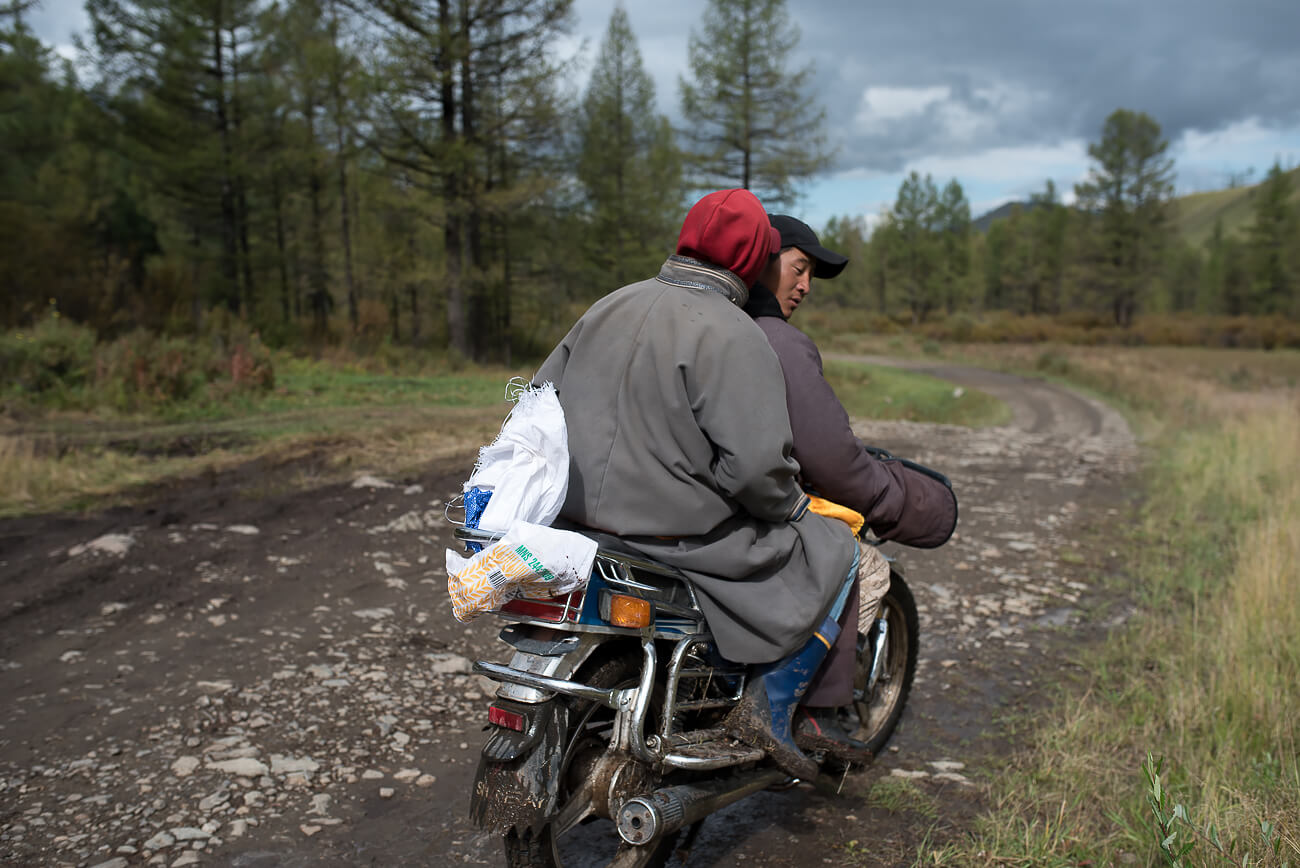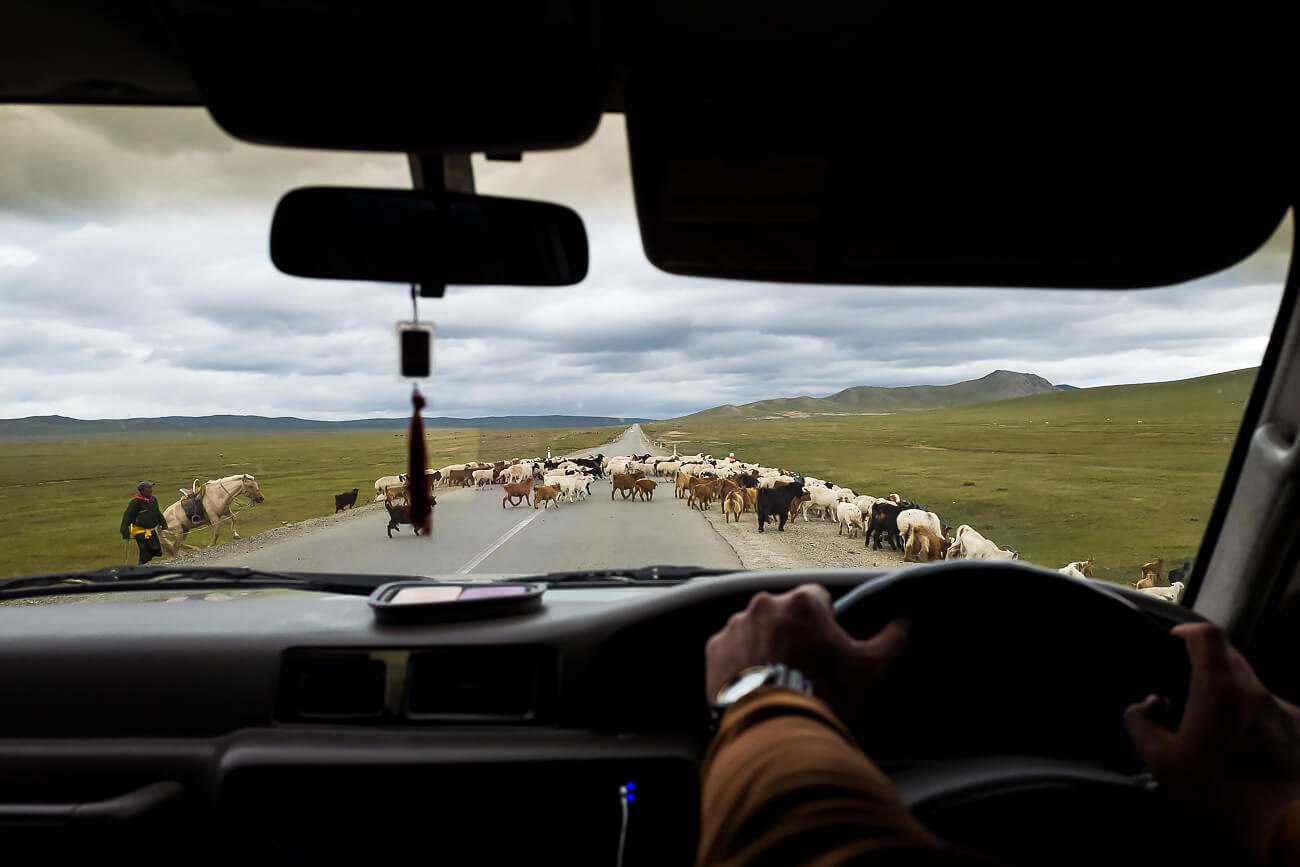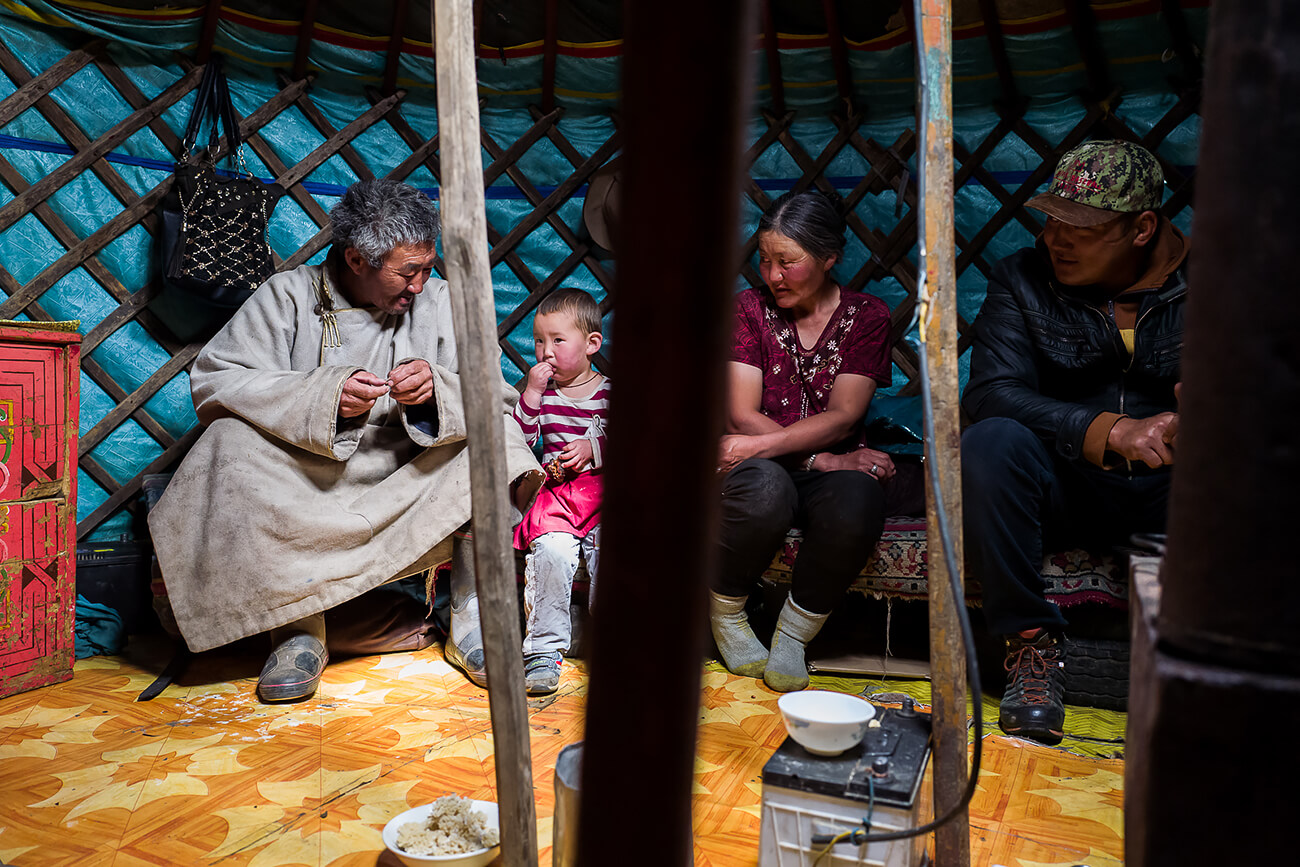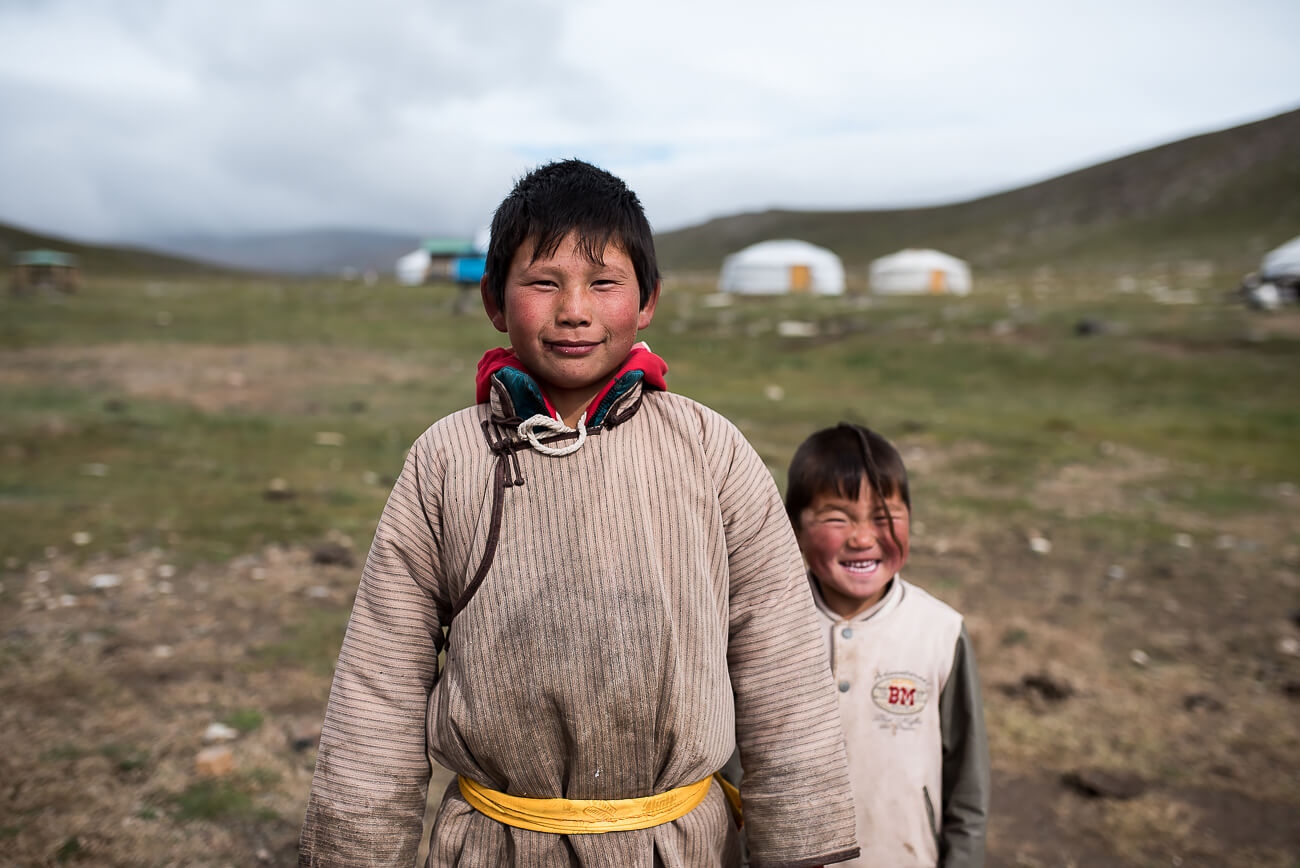Mongolia is a landlocked country located between China and Russia. It is a vast emptiness that links land and sky and is one of the last few places on the planet where nomadic life is still a living tradition. Mongolia may have various geopolitical, cultural, and geographical meanings. Mongolia consists of historic Outer Mongolia. The province of Inner Mongolia is geographically and politically separate and located in the northern part of China, yet it borders Mongolia.
Approximately 30% of the population is nomadic or semi-nomadic, with livestock husbandry playing a central role. They live in gers, or yurts as they are referred to in Turcic languages, portable, round tents covered with skins or felt.
Domestic livestock ranges from cows to sheep, goats, camels, yaks, and - most precious - horses.(Fermented) milk is a popular drink and an important Source of income in Mongolia. The farmers have their cows milked twice a day.
The young children already learn herding tradition and other farming skills, and the animals are both a source of income, food, and companions. The children in particular enjoy playing with them.
The nomad families are proud of their fermented mare's milk. This is an important drink that is also offered to greet guests of the family. Here it is used for a drinking game.
Their livestock is very precious to the nomads, and the whole animal is used from head to toe, including the innards.
A favorite meat dish is Buuz, dumplings filled with meat and vegetables and then steamed, mainly for holidays or special occasions.
Even the bones of the animals are used. Each of the four sides of the knuckle-bone represents a different animal (a horse, sheep, camel, and goat).
Horses hold a special place in Mongolian's heart and of all the domestic animals are held in highest esteem. Mongolian nomads are considered to be some of the best horsemen in the world. In Mongolia, barns, pastures and stables are an exception. Generally, horses are allowed to roam free and feed themselves. Even in the harsh Mongolian winters, the horses are usually simply allowed to graze freely on the steppe, digging through the snow to find forage in the winter.
An little orphan foal has to be fed mare's milk by hand by the family.
The children are very much involved in day to day household tasks and farm work. They attend school but during holidays and on weekends they support their parents.Even the smallest ones help, and seem proud to be involved.
Enkhjargal showing me how she takes a selfie with my iPhone.
Buddhism is the largest religion of Mongolia practiced by 53% of Mongolia's population, according to the 2010 Mongolia census. Buddhism in Mongolia derives much of its recent characteristics from Tibetan Buddhism of the Gelug and Kagyu lineages, but is distinct and presents its own unique characteristics.
Mr Batsaikhan Oyun praying for peace, compassion, strength, and wisdom at a small stupa with prayer flags.
Deel - The Mongolian traditional costume, there are different costume of the different ethnic groups, but Deel have the same shape.
Mongolian nomads use modern transport like anyone else. The road network is rapidly expanding. There are paved roads from Ulaanbaatar to the Russian and Chinese borders, from Ulaanbaatar east and westward and from Darkhan to Bulgan. Many overland roads in Mongolia are still gravel roads or simple cross-country tracks.
Outside Ulaanbaatar, there is little traffic. The only traffic jams tend to be caused by the crossing of the streets of domestic animals.
Although many nomads now move to the city in search of education and better economic opportunities, according to a World Bank report at least a quarter of them still live as nomadic herders, something that is important to their cultural identity. But herding is a hard life, and three out of five people living in poverty in Mongolia are herders. It remains to be seen for how much longer this lifestyle will remain intact, as more young people are moving to urban areas.
About Callie Eh
Photography helps people to see - Berenice Abbott
Snap, and a moment is captured, forever still, saved for generations to see; For Callie Eh, photography is more than a way of making memories, it was a lifesaver and picked her up at a difficult time in her life and has not let her go ever since.
Originally from Malaysia, Callie has lived in various countries and is now based in Zurich, Switzerland. Callie started taking photos in 2008 but becoming a photographer is not something she has planned in the first place. At least not until 2015 when she moved
to Poland, and her work was discovered by Gaston Sitbon, a cafe owner. What also later really impacted her was a documentary workshop in Krakow in 2016, which was extremely intense and deeply changed her photography point of view, on how to make a better picture.
Callie loves to photograph people in their daily life and tell their stories through her lens, for Callie, the camera is a friendly tool to get close to various people and Photographs hold the power to connect people and she became open to different cultures, understand more about their dreams and interests, conversations on diversity and equality before sharing them with you.
Although some people lead a difficult life, for Callie it is important to express their happiness in the pictures. She points out that often the people who have the least are the kindest and happiest.
Her work has been exhibited, awarded, and Published internationally. Recently Callie is one of the "Photo is Light award" Top 10 winners of Photojournalism 2020 Edition and Published in Leica Switzerland Yearly Courrier Magazine 2020.
Callie Eh's Website
Callie Eh on Instagram
All about Callie Eh
